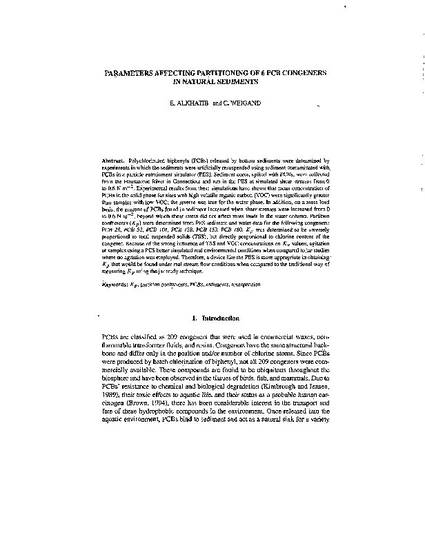
Polychlorinated biphenyls (PCBs) released by bottom sediments were determined by experiments in which the sediments were artificially resuspended using sediment contaminated with PCBs in a particle entrainment simulator (PES). Sediment cores, spiked with PCBs, were collected from the Housatonic River in Connecticut and run in the PES at simulated shear stresses from 0 to 0.6 N m(-2). Experimental results from these simulations have shown that mean concentration of PCBs in the solid phase for sites with high volatile organic carbon (VOC) were significantly greater than samples with low VOC; the reverse was true for the water phase. In addition, on a mass load basis, the amount of PCBs found in sediment increased when shear stresses were increased from 0 to 0.6 N m(-2), beyond which shear stress did not affect mass loads in the water column. Partition coefficients (Kp) were determined from PES sediment and water data for the following congeners: PCB 28, PCB 52, PCB 101, PCB 138, PCB 153, PCB 180. Kp was determined to be inversely proportional to total suspended solids (TSS), but directly proportional to chlorine content of the congener. Because of the strong influence of TSS and VOC concentrations on Kp values, agitation of samples using a PES better simulated real environmental conditions when compared to jar studies where no agitation was employed. Therefore, a device like the PES is more appropriate in obtaining Kp that would be found under real stream flow conditions when compared to the traditional way of measuring Kp using the jar study technique.
